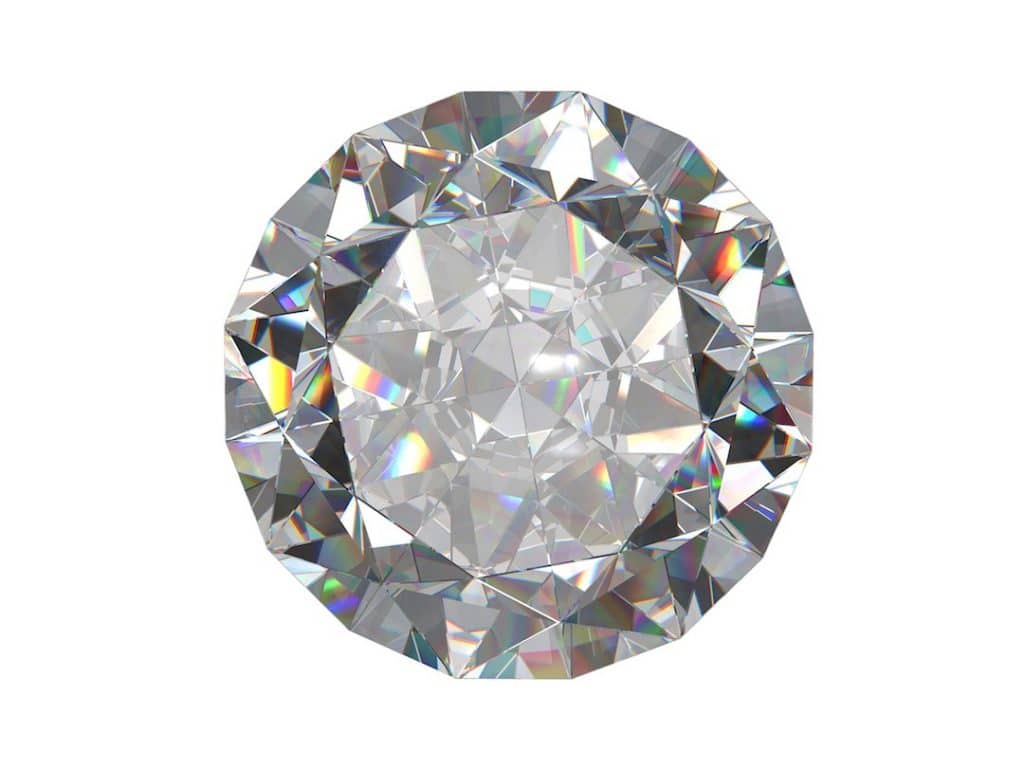A few of Ireland’s most beautiful natural beauty can be found in the Beara Peninsula, a rocky outcrop located 11.6 kilometers west of the Iveragh peninsula. Once a monastic settlement, Skellig Michael was chosen to be the setting for the final scene of Star Wars Episode VII. The rocky outcrop is composed of compressed slate and Old Red Sandstone, and its unique features make it a popular film location.
Minerals or rocks that can be cut, carved, and polished into attractive stones used in jewelry or collected are known as gemstones. If a stone is flawless, it is worth more money.
Although most gemstones are minerals with mineral-like qualities, organic compounds such as Amber and Coral are also considered gems. A gem’s weight is expressed in carats (5 carats = 1 gram). Gems last for a long time because they are chemically resistant, hard enough to keep a beautiful polish, and not readily chipped or shattered. Emerald, ruby, and sapphire are examples of gems.

Gemstones of Ireland
Emerald
Emerald is a green Beryl variety. It is one of the most valuable gemstones because of its green color, toughness, and scarcity. Emeralds are prized for their deep emerald color. (In general, the lighter Emerald’s hue, the lower its value.) Heat can change the color of emeralds, turning them blue and transforming them into aquamarine.
Amethyst
Since ancient times, amethyst has been fashionable and valued. Its name comes from the Greek word “amethystos,” which means “not inebriated,” It was formerly supposed to protect people from getting drunk. Since the 1800s, large Amethyst deposits have been discovered, making Amethyst more affordable and accessible. Colors of amethyst range from light to dark purple, with transparent deep purple colors being the most prized.
Diamonds
Because diamond is the hardest natural mineral on Earth, it is named after the Greek word “Adamas,” which means “unconquerable.” In fact, they are so hard that only other diamonds will be able to cut them. Like charcoal and graphite, carbon is found in diamonds, and it is unique among jewels because it comprises only one component – carbon. Diamonds come in a variety of colors, including colorless, yellows, browns, greens, blues, pinks, and a very uncommon red. The majority of them have a yellow or brown tint to them. The uncommon red or rare colorless varieties are the most valuable. Diamonds have been known in India for over 2300 years.
Diamonds originate between 120 and 200 kilometers (75 and 120 miles) underneath the surface of the Earth. Carbon dioxide pockets existed deep within the Earth’s crust, and extreme heat and pressure led carbon atoms to condense and create diamonds over millions of years. As the pressure mounted, volcanic eruptions occurred, bringing the diamonds to the surface.
Opal
Opal is one of the most colorful gemstones, and exceptional examples can be worth more than a diamond. Opalescence refers to the iridescent color that appears on the surface. The value of an Opal is determined by the intensity and distribution of color flashes.
Ruby
The bright red color of ruby makes it one of the most well-known gemstones, and it’s also tough and long-lasting, with a lustrous sheen. Transparent variants are uncommon, and extremely pure specimens are rarer than diamonds.
Ruby is a form of the mineral Corundum that is red in color (Sapphire, the other gem variety of Corundum, encompasses all colors of Corundum aside from red). Because Ruby and Sapphire are identical in every aspect except color, Ruby is essentially a red Sapphire. On the other hand, Ruby has always been categorized as a separate gemstone.
Turquoise
Turquoise is an old gemstone discovered in relics from various civilizations, including the Persian and Native American cultures. It is most typically used in jewelry and ornaments. Turquoise is one of the most important opaque gemstones, and it is still popular today. It is prized for its distinctive turquoise-blue color, and it is the only gemstone to be called for a specific color.
Rose Quartz
Rose Quartz is a rosy pink quartz type. Its color is usually gentle, ranging in intensity from light pink to medium pink (Smokey quartz is its brown-black relation). Rose Quartz is fairly widespread and can be found in huge crystals in various regions worldwide. Rose Quartz’s scarcity and frequent lack of full transparency detract from its value as a pink gemstone compared to other pink gemstones like Topaz.
Sapphire
The most expensive and valuable blue gemstone is sapphire. Because of its superb color, hardness, durability, and brilliance, it is a highly sought-after gemstone. Sapphire refers to the blue variant of the mineral Corundum without any color prefix. However, apart from Ruby, the red variety of Corundum, which has its own name, the term Sapphire embraces all other gem varieties and colors of Corundum.
What is Connemara Marble?
Connemara Marble is a type of marble found in Connemara, Ireland. ‘The Irish Gemstone’ has a long and illustrious history.
Connemara marble is a rare and exquisite stone found only on Ireland’s rocky wild Atlantic coast. With greens of practically every color in stunning layers and patterns, this Irish Marble is as unusual as the spectacular Irish environment it is found in. But how did Connemara marble come into being? Connemara Marble is a type of marble found in Connemara, Ireland. What makes it so special?
Connemara marble was produced around 600 million years ago from debris accumulated in a shallow primeval sea. Over 390 million years ago, these sediments were changed by powerful pressures created during the development of the mountains of West Ireland and Scotland!
Why Wear Connemara Marble?
Connemara Marble is an excellent choice for anyone looking to add green tones to their jewelry collection. The delicate tints will complement any skin tone, and the smooth, cooling feel of natural stone on the skin is supposed to offer peace to the wearer.
It comes in over 40 different colors of green and contains a lot of magnesium, which is known to help with calcium and magnesium absorption. This stone connects you to Ireland’s spiritual history and brings you peace, tranquillity, restoration, and healing.
The majority of Connemara Marble comes from our family quarry in Lissoughter, Co Galway, in operation since 1945.
How Do Gemstones Form?
Most gemstones are formed 3 to 25 miles beneath the Earth’s surface, in the Earth’s crust. Diamonds and peridot are two gemstones found much deeper in the Earth. Diamond is formed in “kimberlite pipes” that start deep in the Earth’s mantle and end at the surface (>125 miles). Molten magma flowing through these pipes generally cools as lava and rises to the surface, but if it doesn’t, it cools more slowly, crystallizes, and creates coarse-grained minerals.
Igneous rock, the first type of rock, is generated by the cooling and crystallization of magma beneath the earth’s surface (intrusive or plutonic) or by lava flows at the surface (extrusive or volcanic). Depending on the elements available, the cooling time, and the environment, interlocking crystals grow within intrusive igneous rock and may create gemstones. The larger the diamonds, the slower the cooling (in the deep environment).
Quartzes (including amethyst, citrine, and ametrine), garnets, moonstone, apatite, diamond, spinel, tanzanite, tourmaline, topaz, and zircon are all found in igneous rock. Pegmatites and hydrothermal veins genetically related to igneous rocks produce some of these jewels.
The second category is sedimentary rock, which gives rise to minerals like jasper, malachite, opal, and zircon. Sedimentary rocks are generated when a rock is worn down, and the fragments are transported away by water or the wind, eventually combining over time.
Metamorphic rock, the third type, is generated when extreme subterranean heat or pressure transforms existing rocks. Metamorphic rock produces beryls (emerald, morganite, aquamarine), jade, lapis lazuli, turquoise, spinel, ruby, sapphire, and zircon.
Where do Gemstones Come from?
Diamond mining is a highly automated process. Pit mining, which involves heavy machinery, hydraulic shovels, and trucks to mine diamonds from kimberlite pipelines, is the most common method of recovering diamonds. Colored gemstone (non-diamond) mining, on the other hand, is a completely distinct procedure. Because sources of precious colored gemstones are limited and small quantities of gems are distributed throughout a significant volume of rock, mining for them is difficult and time-consuming.
In these circumstances, modern mining techniques are of limited use, and the deposits are frequently too small to be viable for large mining companies; thus, they are left to small, independent miners who rely on the same manual procedures they have used for decades. Nonetheless, several big mining corporations have joined the gemstone market with innovative plans for utilizing modern mining techniques in recent years in recent years.
How do you Know if a Colored Gemstone is Genuine?
Gemstone counterfeits, synthetic gemstones, can be mistaken for the real thing, just like gold. Another component in determining a gemstone’s worth is knowing where it comes from, geologically and geographically, which cannot be discerned visually.
Using energy-dispersive X-ray fluorescence (EDXRF) to determine the authenticity of colored gemstones and their geographical origin is a useful technology. Precious gemstones such as rubies, emeralds, and sapphires from various sources often exhibit a characteristic combination of trace elements at variable concentrations, depending on the geological context.
Identification and measurement of such materials, for example, could help track an emerald back to its source countries, such as Colombia, Brazil, Afghanistan, Zambia, or Zimbabwe. Similarly, the presence of certain trace elements aids in determining the difference between a precious naturally formed gemstone (such as ruby) and a nearly useless synthetic crystal (e.g., synthetic ruby.)
Conclusion
It’s interesting to note that many of Ireland’s symbols have ties to the green precious gemstone, emerald. So, it is interesting to note that the Emerald Isle is often compared to which gemstone, and why? Let’s explore these symbols a bit further. The four-leaf clover is a common green vegetable with four leaves rather than the normal three. Irish people believe that this fruit will bring good luck and prosperity.
Another gem often associated with Ireland is the Connemara Marble, a rare type of marble from the Connemara region of West Ireland. Connemara Marble is formed when limestone is heated under pressure. It is primarily green but has some brownish shades. It is found in Ireland, including Westminster Cathedral, the Natural History Museum, and the Connemara Marble in Co. Waterford.







